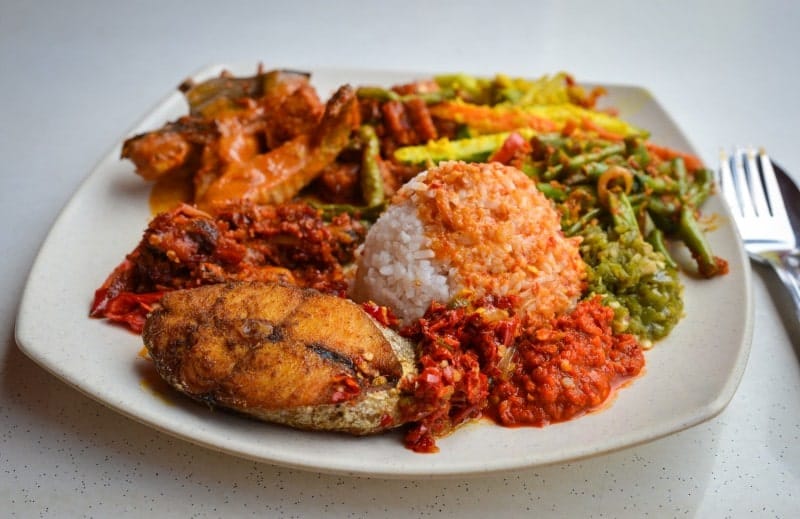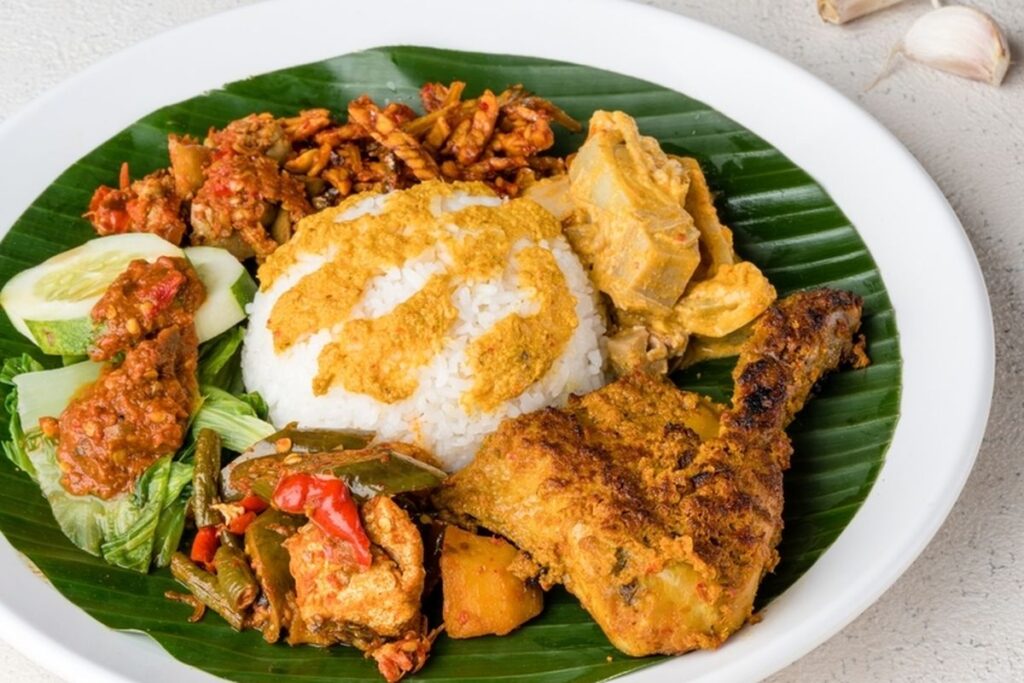
Nasi Padang’s popularity extends far beyond Indonesia’s borders.
Through Minangkabau migrants, the cuisine has spread across Malaysia, Singapore, Australia, the Middle East, and even Europe.
Its signature dish, rendang, was crowned by CNN as “the world’s most delicious food” in 2011 and 2017. These recognitions catapulted Nasi Padang to global fame, making it a proud representative of Indonesian gastronomy.
Rich and Aromatic Flavors
The charm of Nasi Padang lies in its bold, spicy, and aromatic taste. The secret is in the generous use of traditional spices like lemongrass, galangal, turmeric, chili, and coconut milk.
Each dish is cooked slowly to let the spices fully infuse the ingredients.
Take rendang, for example simmered for hours until the sauce thickens and caramelizes, creating a deep, flavorful richness that defines Indonesian cuisine.

Philosophy Behind Nasi Padang
Beyond its irresistible taste, Nasi Padang carries profound cultural meaning.
Each dish represents values from Minangkabau philosophy rendang symbolizes patience and perseverance, while gulai reflects courage in facing life’s challenges.
The global spread of Nasi Padang also mirrors the spirit of the Minangkabau diaspora, who bring their traditions and flavors wherever they go, keeping their cultural roots alive through food.
Conclusion
Nasi Padang is more than just a meal it’s a culinary legacy that embodies Indonesia’s cultural identity.
From humble kitchens in West Sumatra to fine dining establishments abroad, its flavors continue to unite people and introduce the richness of Nusantara cuisine to the world.






